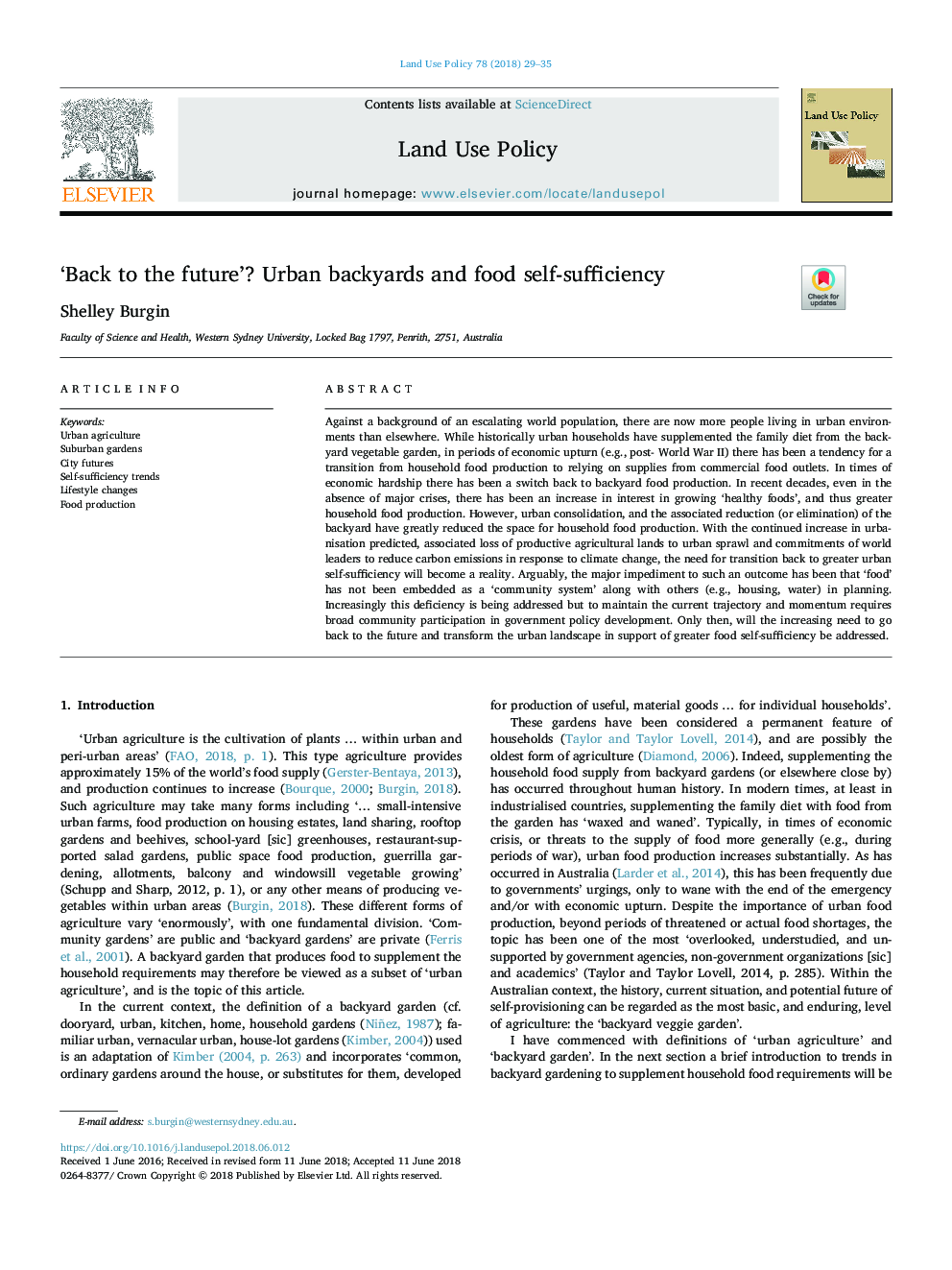| Article ID | Journal | Published Year | Pages | File Type |
|---|---|---|---|---|
| 6545998 | Land Use Policy | 2018 | 7 Pages |
Abstract
Against a background of an escalating world population, there are now more people living in urban environments than elsewhere. While historically urban households have supplemented the family diet from the backyard vegetable garden, in periods of economic upturn (e.g., post- World War II) there has been a tendency for a transition from household food production to relying on supplies from commercial food outlets. In times of economic hardship there has been a switch back to backyard food production. In recent decades, even in the absence of major crises, there has been an increase in interest in growing 'healthy foods', and thus greater household food production. However, urban consolidation, and the associated reduction (or elimination) of the backyard have greatly reduced the space for household food production. With the continued increase in urbanisation predicted, associated loss of productive agricultural lands to urban sprawl and commitments of world leaders to reduce carbon emissions in response to climate change, the need for transition back to greater urban self-sufficiency will become a reality. Arguably, the major impediment to such an outcome has been that 'food' has not been embedded as a 'community system' along with others (e.g., housing, water) in planning. Increasingly this deficiency is being addressed but to maintain the current trajectory and momentum requires broad community participation in government policy development. Only then, will the increasing need to go back to the future and transform the urban landscape in support of greater food self-sufficiency be addressed.
Related Topics
Life Sciences
Agricultural and Biological Sciences
Forestry
Authors
Shelley Burgin,
